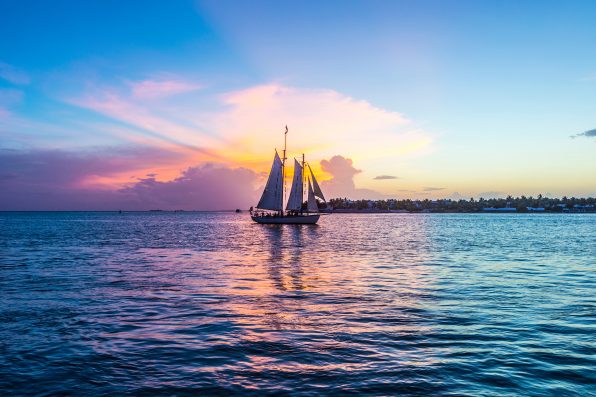This Ship Wrecked In The Florida Keys In 1742, And The Crew Got Stranded On A Deserted Island For 66 Days

When an 18th-century warship ran aground in the shallow waters of the Florida Keys, it became stuck there for many years.
Recently, archaeologists discovered the ship’s remains in the waters surrounding Dry Tortugas National Park.
The British ship, which was called the HMS Tyger, was built in 1647 and sank in 1742 after it crashed into the reefs in the national park.
At the time, the ship had been on duty during the War of Jenkins’ Ear, a conflict between Britain and Spain that lasted from 1739 to 1748.
In 1731, Spanish sailors boarded a British brig off the coast of Cuba and sliced off the captain’s left ear.
This incident was used as a reason for the British to declare war on Spain. For almost a decade, the two countries fought over control of trade in the Caribbean.
The remains of the wreckage were found in 1993, but the identity of the ship was not confirmed until now.
In 2021, archaeologists from the Dry Tortugas National Park and the National Park Service’s Submerged Resources Center and Southeast Archaeological Center analyzed the wreck and determined that it was the Tyger.
At the site, they came across several important artifacts, including five cannons and logbooks detailing how the vessel went down.

travelview – stock.adobe.com – illustrative purposes only, not the actual person
According to the written records, the crew tried to lighten the ship when it ran aground. They got the vessel to float again for a brief time before it finally sank in the shallows.
The cannons were located 500 yards from the wreck, and it appeared that they were thrown overboard when the ship hit the reefs.
After the ship became submerged, the 300 members of the crew were left stranded on Garden Key for 66 days.
Garden Key gets a lot of visitors now, but back then, it was a deserted island. While on the island, they suffered from thirst, extreme heat, and mosquitoes. They built vessels from the driftwood of the shipwreck to try to escape.
Then, they burned the Tyger’s remains to ensure that the Spanish would not be able to use it. Once they departed from the island on their makeshift boats, they traveled 700 miles across enemy waters to Port Royal in Jamaica.
The discovery of the wreckage underscores the value of preserving historical sites. As technology grows more advanced, future generations of archaeologists can uncover more information from the sites that hadn’t been able to come to light before.
“Archaeological finds are exciting, but connecting those finds to the historical record helps us tell the stories of the people that came before us and the events they experienced,” James Crutchfield, the park manager at Dry Tortugas, said.
“This particular story is one of perseverance and survival. National parks help to protect these untold stories as they come to light.”
The study was published in The International Journal of Nautical Archaeology.
Sign up for Chip Chick’s newsletter and get stories like this delivered to your inbox.
More About:News





